
10 kW ELECTROLYSER
Collaboration with Oort Energy, UK-based start-up company with aims to produce green hydrogen with their innovative technology.
Polymer Electrolyte Membrane Water Electrolyser (PEMWE).
OORT ENERGY
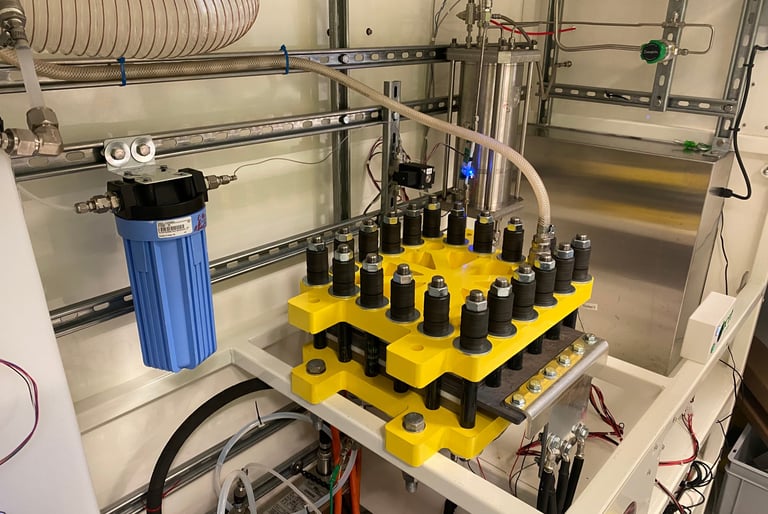

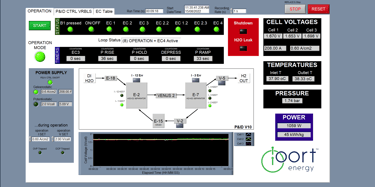

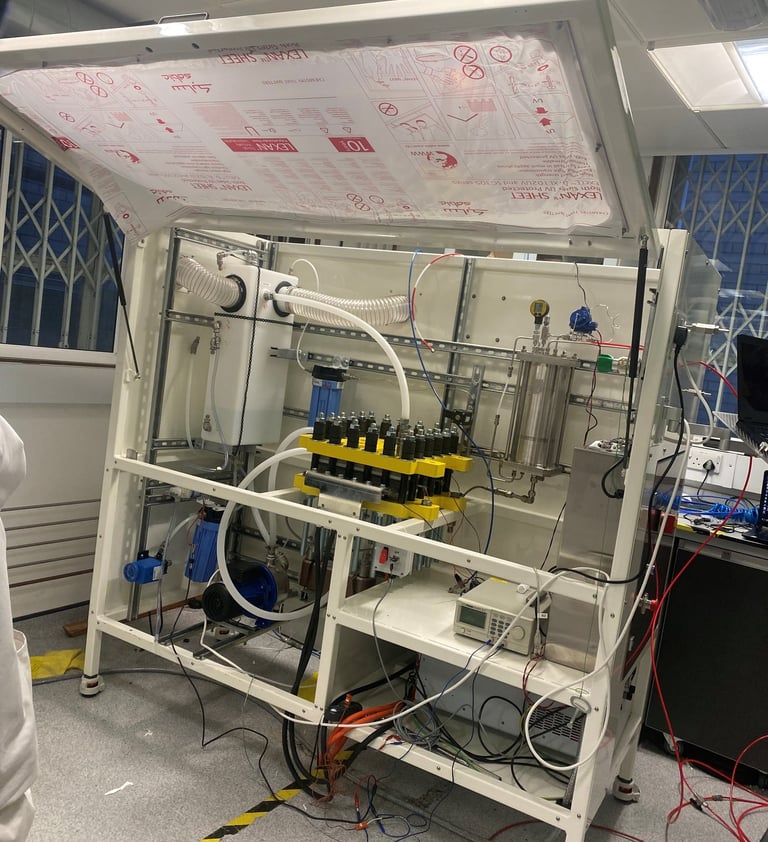

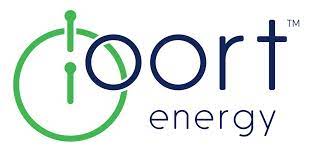

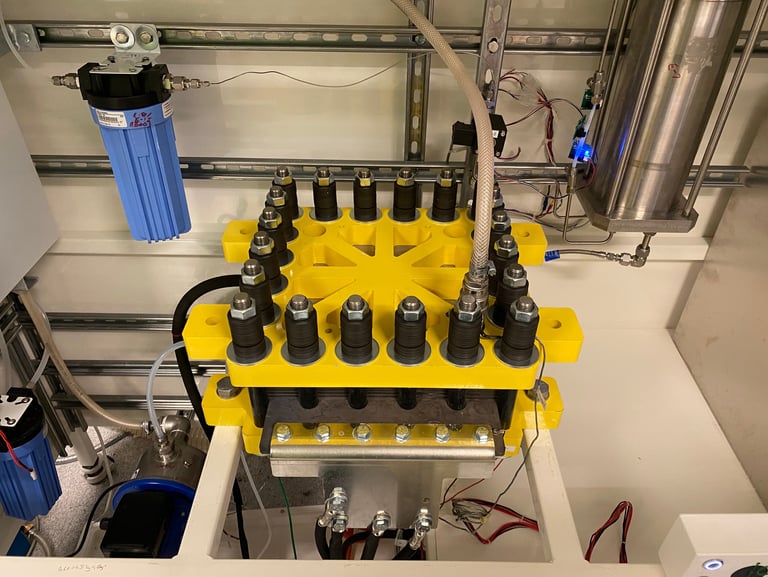

Electrolysers use electricity to convert water directly into pure hydrogen and oxygen at system efficiencies of up to 56% [1].
If the input electricity was obtained from renewable energy resources (wind, solar, geothermal etc.), electrolysis would offer an alternative method to producing hydrogen, with less dependency on fossil-fuel resources and produce far less greenhouse gas emissions compared to current hydrogen production methods.
PEMWEs have already reached commercial maturity and can be sized from W to MW.
Research is still on-going to understand degradation processes, develop mitigation strategies, increase operational life, improve system efficiency and decrease system costs.
System integration with an Intelligent Energy fuel cell system for demonstrable use of produced hydrogen
LabVIEW based code - control of complete system, including safety features + sensor readings + data acquisition
Pipe-work for hydrogen, oxygen + water
CAD design + 3D printing
Prototyping of electrolyser components
Wiring loom
PID + software architecture + bill of materials (BOM)
Risk assessments + standard operating procedures (SOP)
ELECTROLYSER BASICS
WORK BY SSR ENGINEERING
10 kW PEMWE producing fuel-grade hydrogen fed to an Intelligent Energy fuel cell stack, demonstrating the capabilities of both electrolyser and fuel cell technologies.
PROJECT SCOPE FOR SSR ENGINEERING
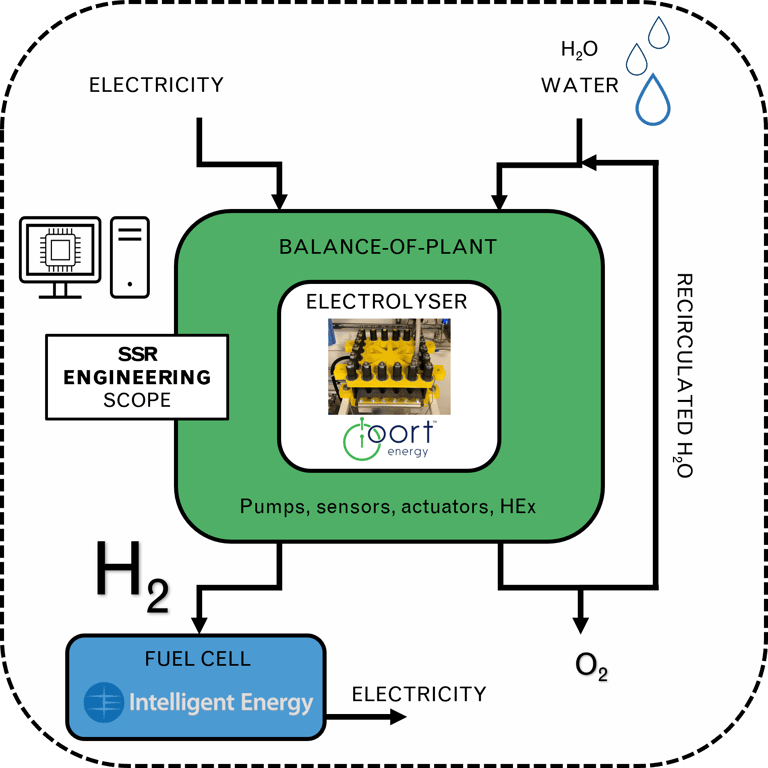

Example of an ‘ideal’ energy market through a hydrogen economy.
Electricity generated from alternative and clean energy sources can provide power directly to the grid.
In cases of low grid demand (demand and supply mismatch), these sources of clean energy can still be utilised, by converting water into hydrogen.
This hydrogen can be sent by pipelines for industrial use, to refuelling stations or for stationary combined-heat-and-power (CHP) applications e.g. powering homes or buildings.
Otherwise, the hydrogen can be stored in tanks and cylinders, to be used again at a later date to convert back into electricity using fuel cell technology.
EXAMPLE OF A HYDROGEN ECONOMY
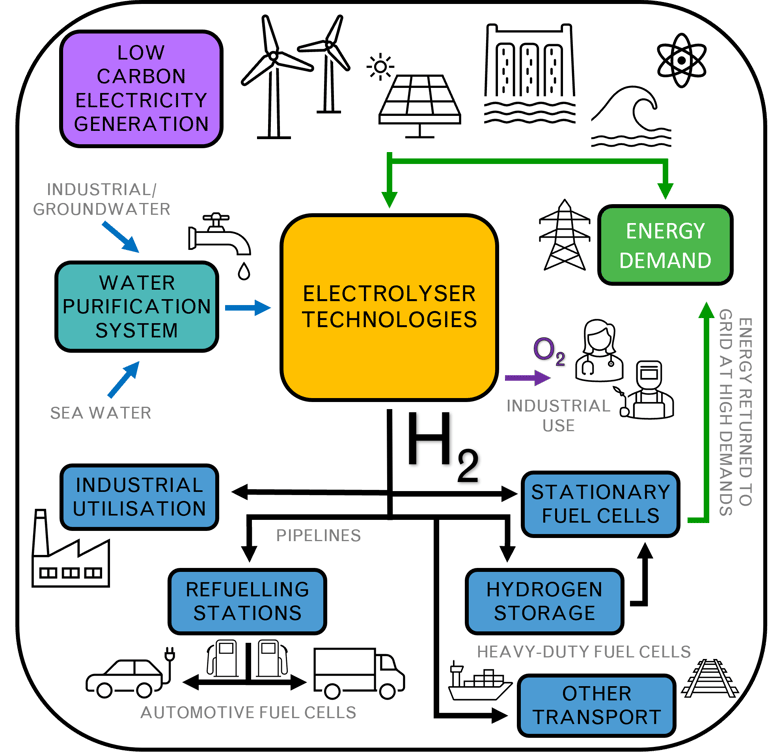

Oort Energy - Polymer Electrolyte Membrane Water Electrolyser (PEMWE) 10 kW
Oort’s 1st generation PEMWE architecture - commercial scale
3-cell system operating at 10 kW, producing 4.3 kg/day of fuel-grade hydrogen
Designed for 30 bar operation

[1] National Renewable Energy Laboratory (NREL), ‘Technology Brief: Analysis of Current-Day Commercial Electrolyzers’, NREL/FS-560-36705, 2004

© Copyright SSR Systems Engineering Ltd - All rights reserved
